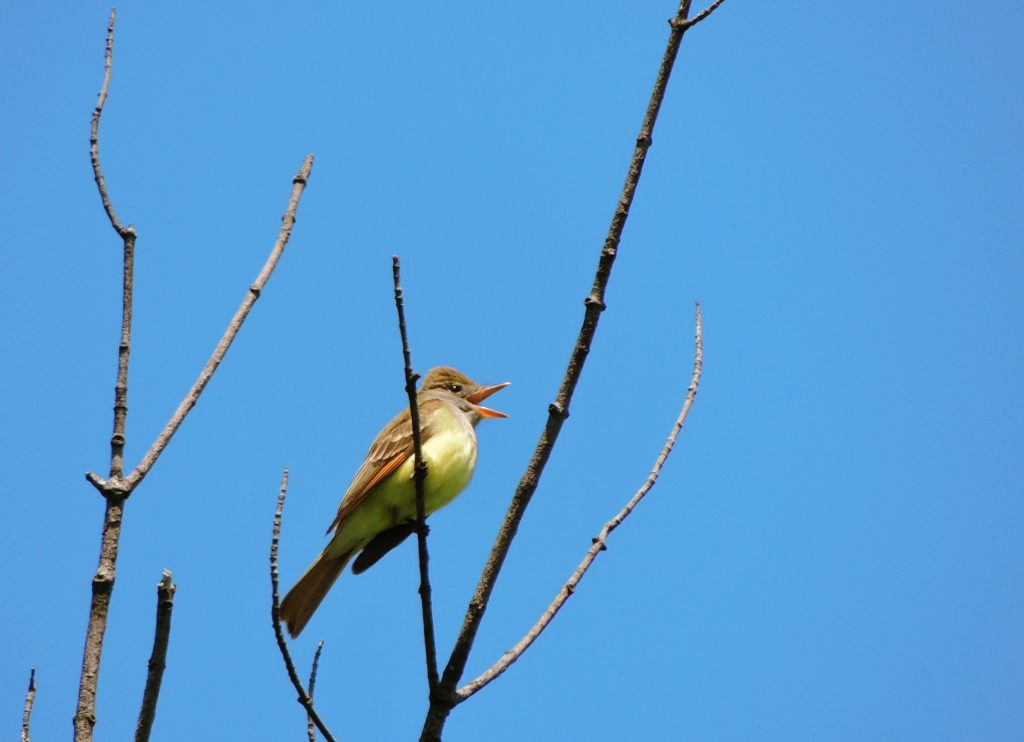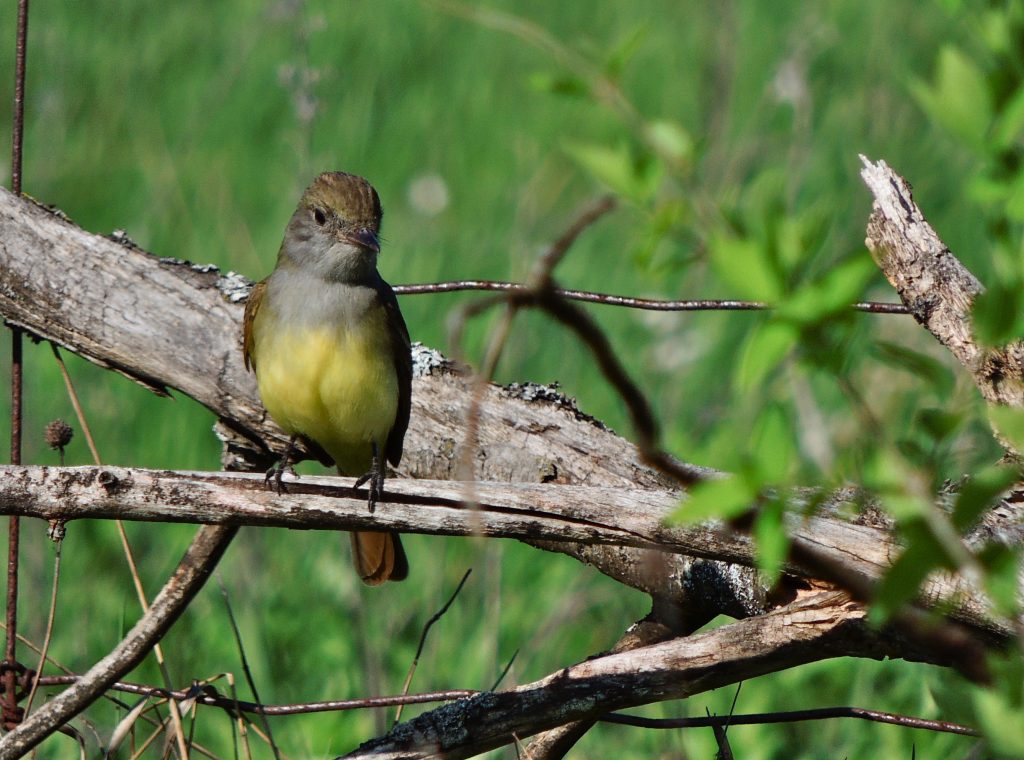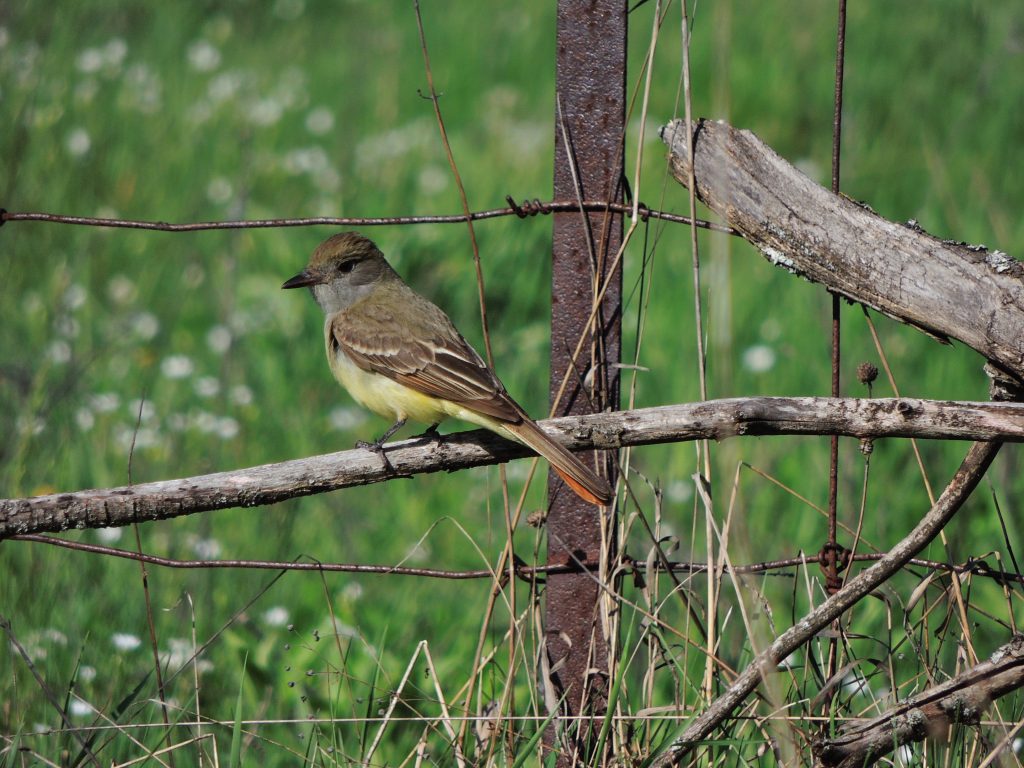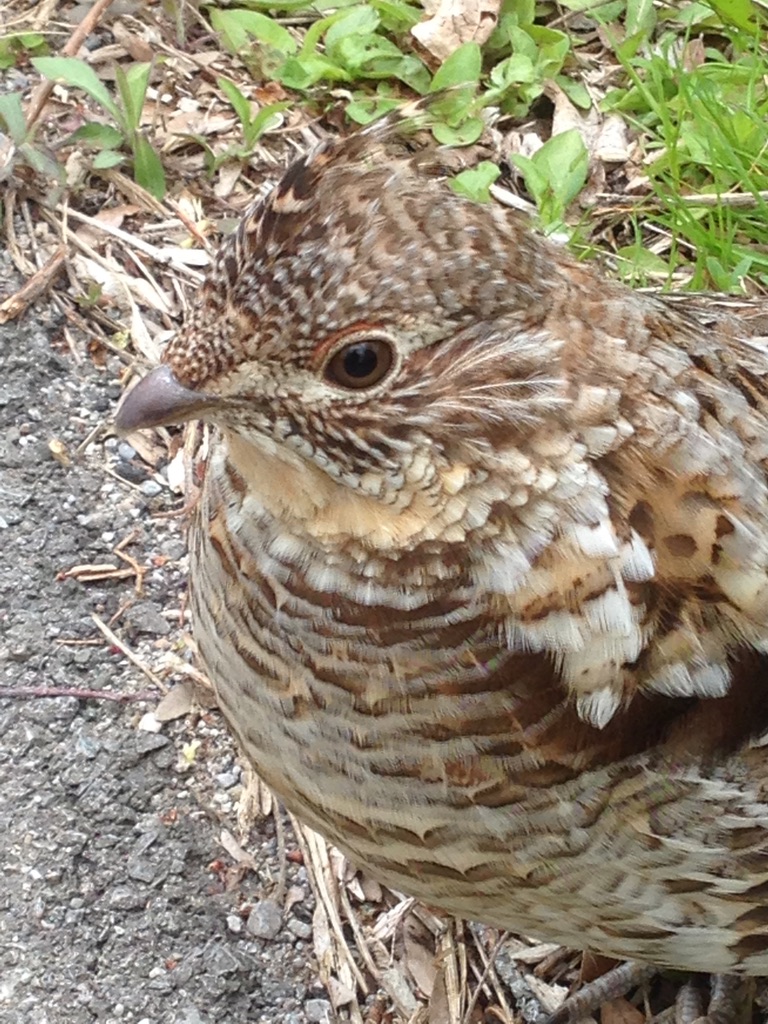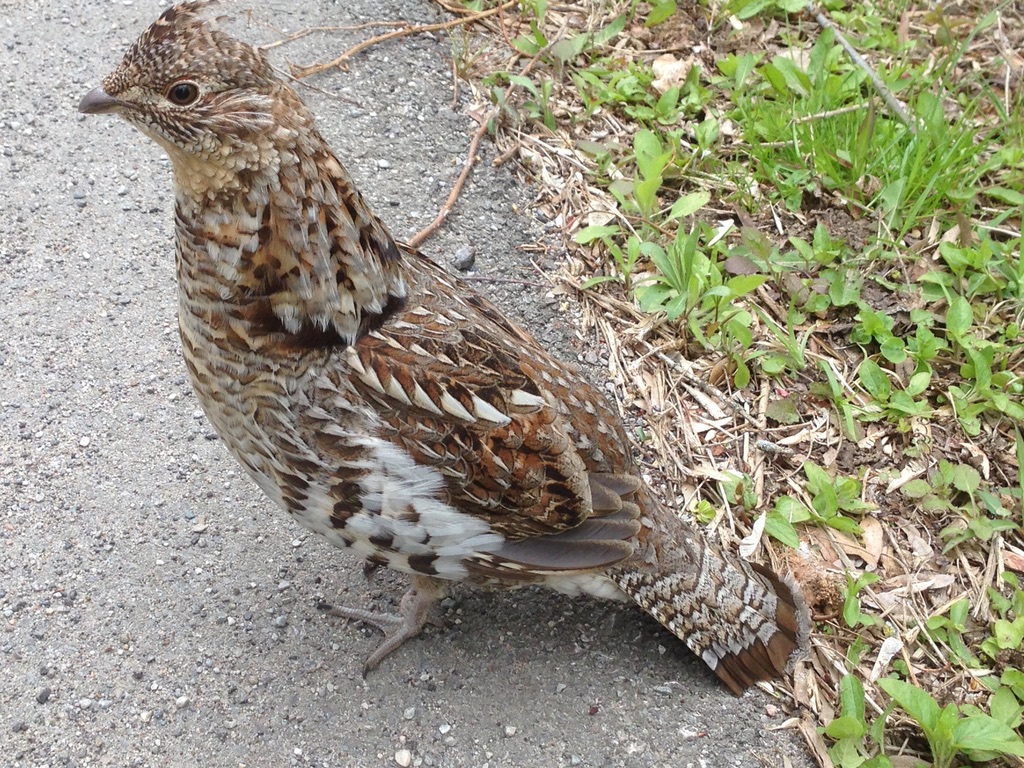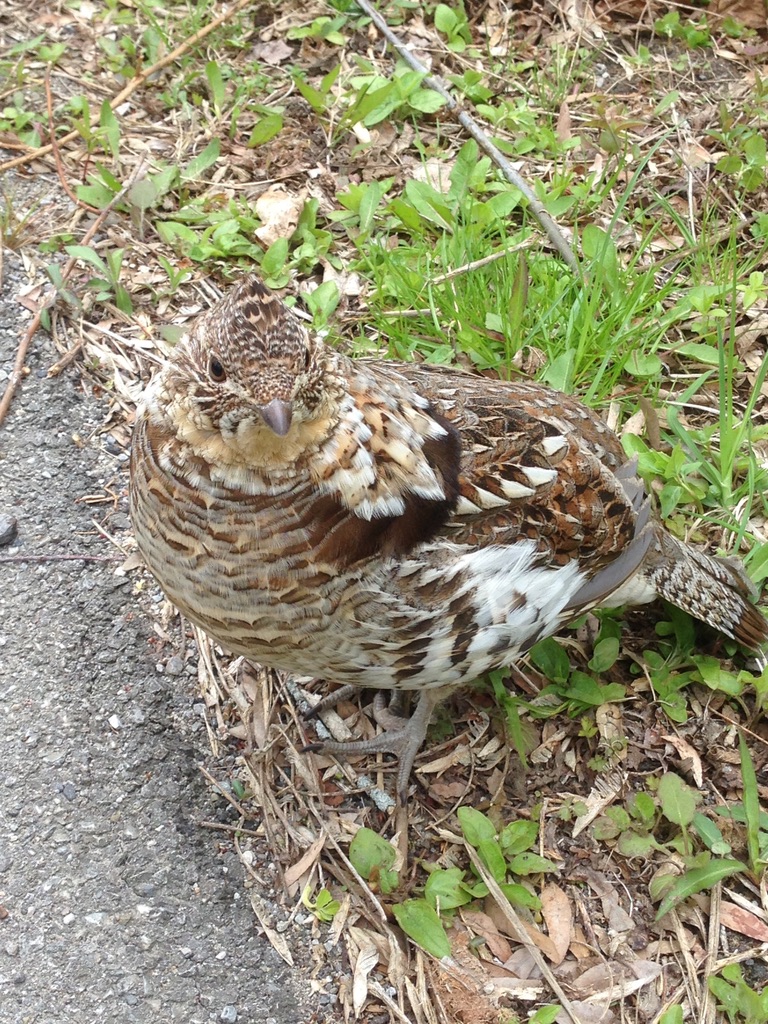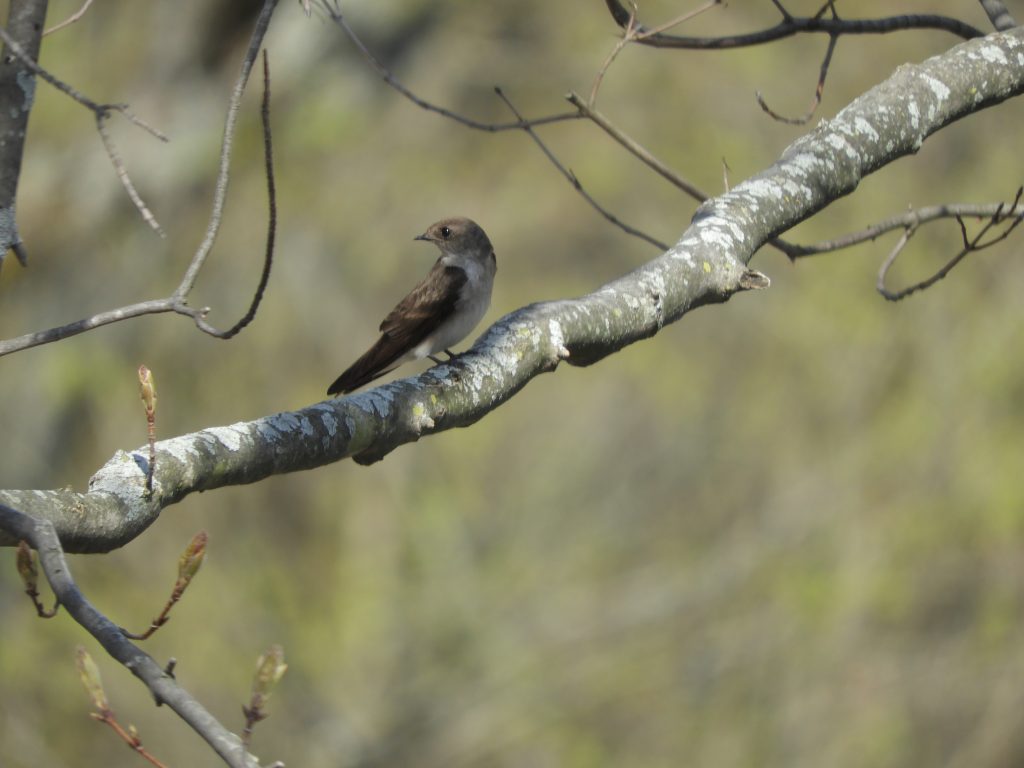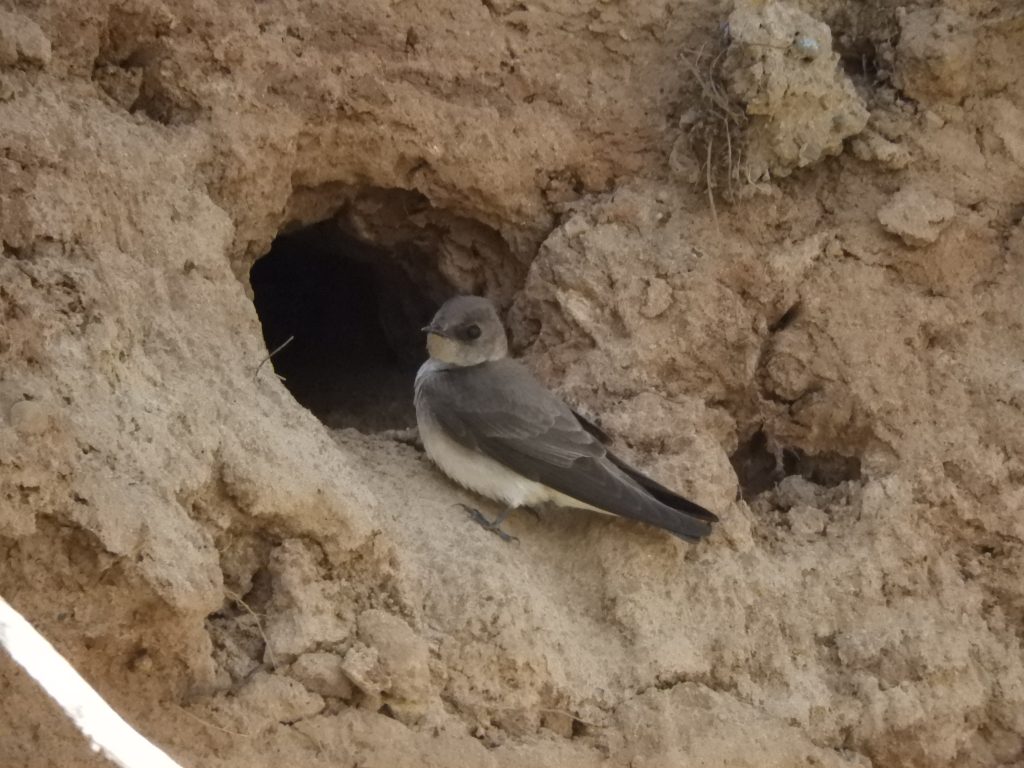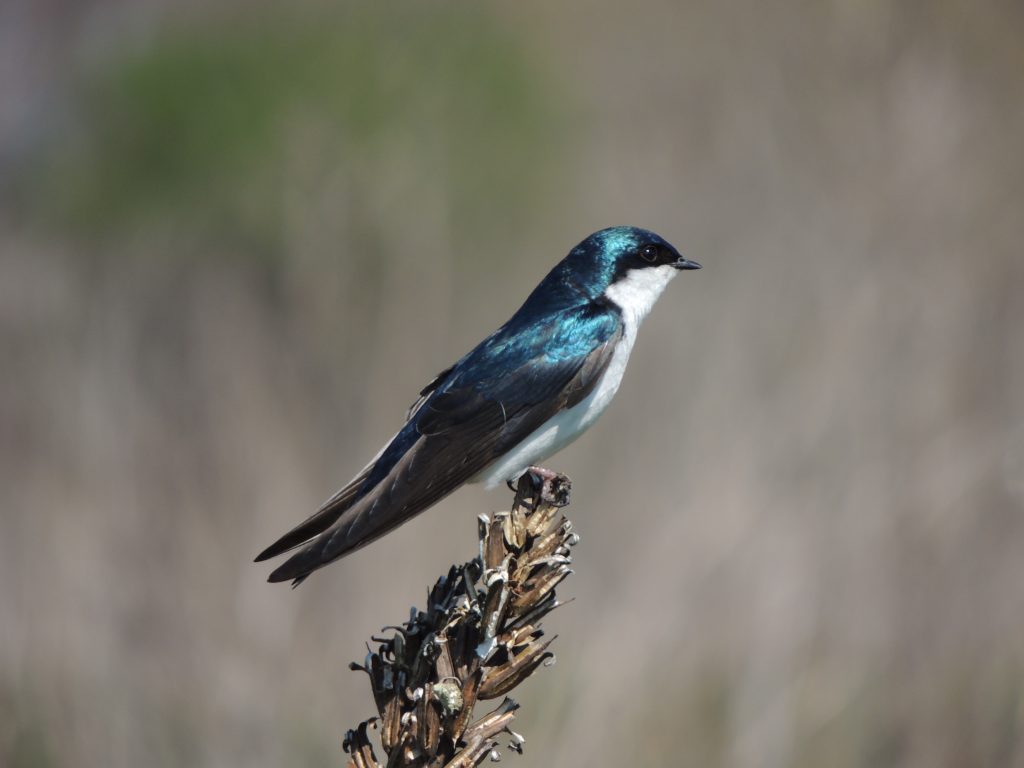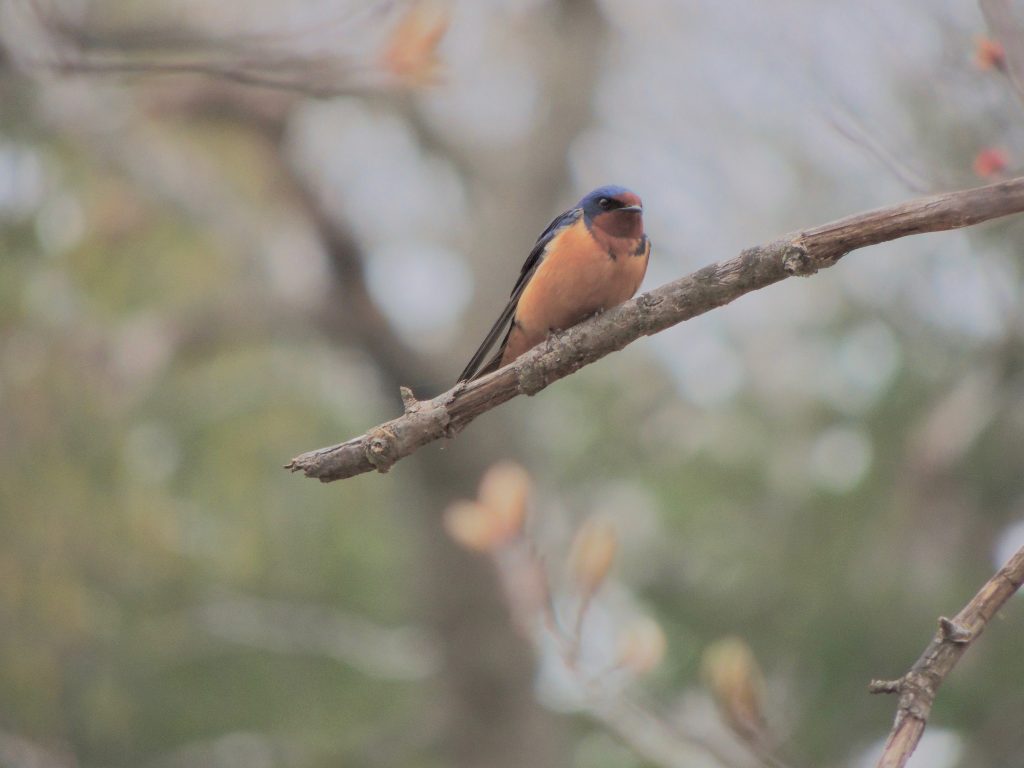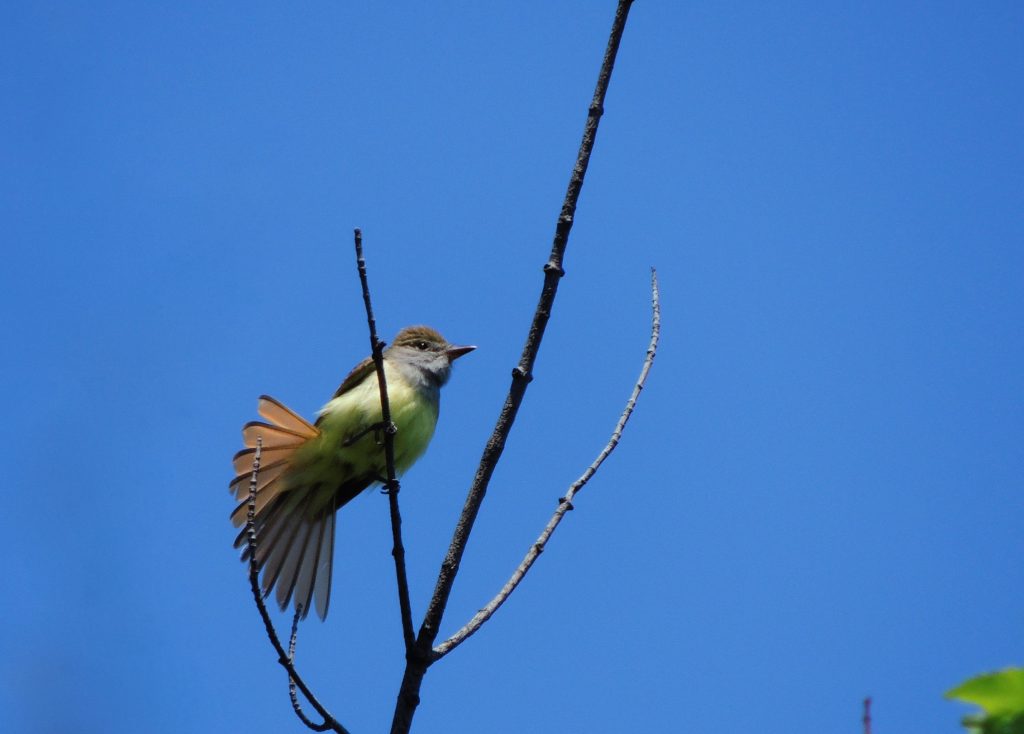
Paletta Park, Burlington, ON. May 14 2020. This was a morning we’d been waiting for, finally a day not dominated by Arctic weather, finally a day to meet some southern migrants. Those migrants were perhaps more desperate to be here than we were to see them, they’ve been on their way north for weeks from tropical spots like El Salvador, Panama, Columbia and even Brazil, they have a breeding agenda, an appointment to keep with the future.
Our eight-strong warbler tally was Black-throated Blue, Black and White, Black-throated Green, Nashville, Chestnut-sided and Blue-winged Warblers, Northern Parula, and Northern Waterthrush, not bad. The last four were new to me this year.
It’s not all about warblers though, and I was more taken by a Great-crested Flycatcher than anything else, it was my Bird of the Day on a day most will remember for the warblers. It’s one of those birds with attitude, self-assured and a touch pugnacious. Later, after all this migration fuss is over, I’ll probably encounter Great-crested Flycatchers again in their wet-woodland territory. They really like soggy, mosquito-marshy clearings in deciduous forests, places with plenty of dead and dying trees, any of which might have a suitable hole for a nest site.
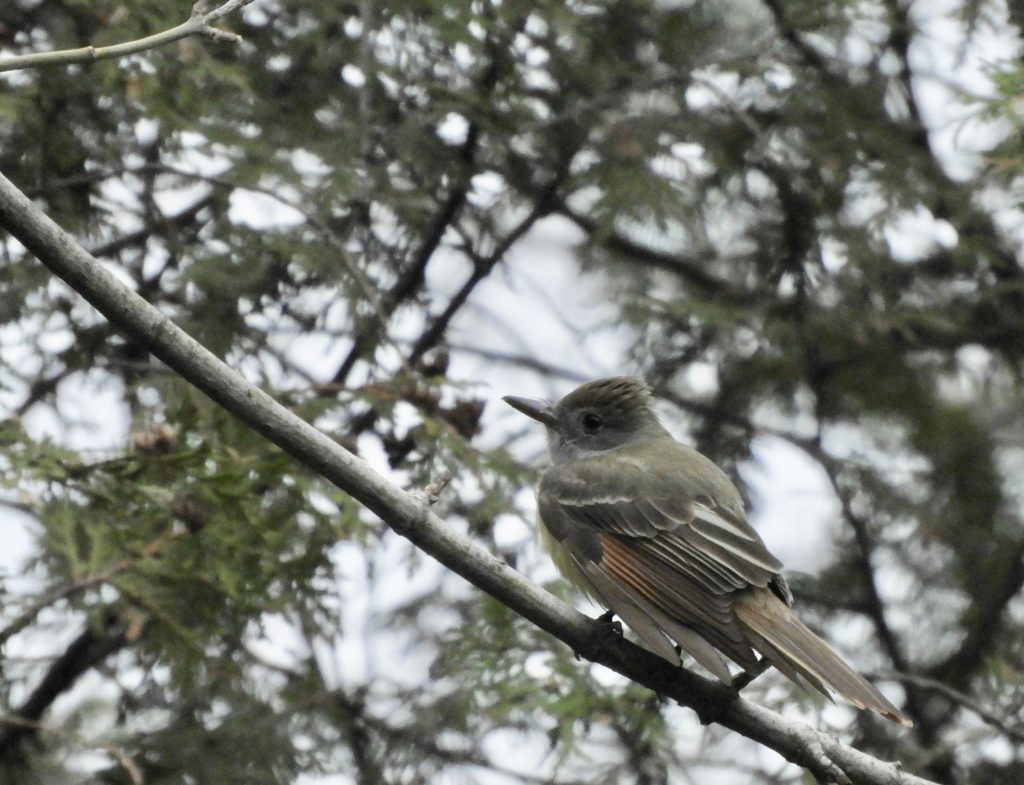
Above is a shot of today’s bird but the light was difficult and the cedar branches don’t help. Below are photos from other days that do justice to the subtle beauty of this creature, that lovely chestnut in the tail and wings and the sulphur yellow breast.
